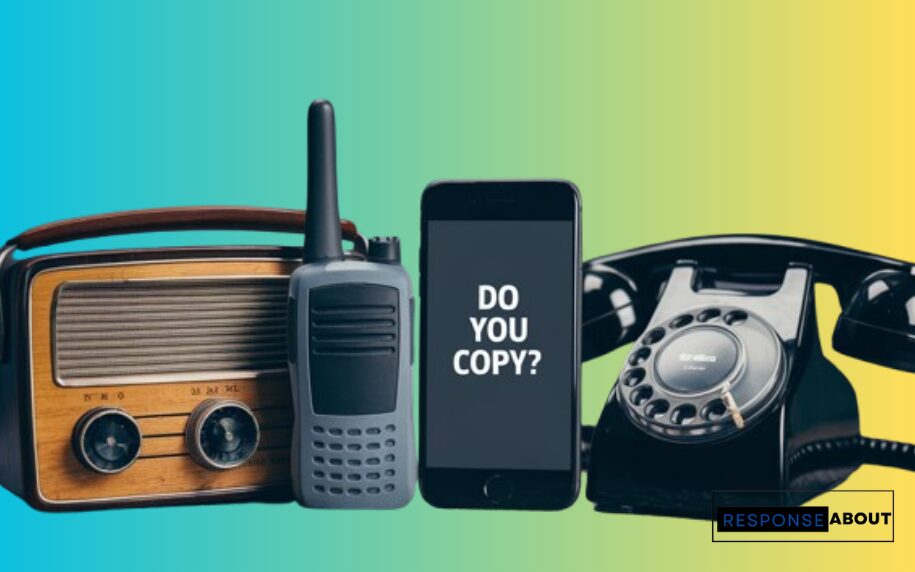Picture this: you’re minding your own business, maybe working on a project or lost in thought, when suddenly a coworker or family member interrupts with “Do you copy?”
If you’re like most people, that question probably makes you want to roll your eyes so hard they pop out of your head. I mean, what are we, walkie-talkies? Last time I checked, this is real life, not some cheesy action movie!
But hey, I get it. We’ve all been there, dealing with that one person who thinks they’re clever dropping military lingo like “copy that” and “Roger Wilco” every chance they get. And sure, you could just ignore them or shoot back a monotone “yes”…but where’s the fun in that?
Sometimes, you just need a good comeback locked and loaded for when you inevitably get hit with the dreaded “do you copy?” again. Well, fear not my friends—I’ve got your back. Here are 30 witty, snarky, and even downright silly responses that are way more fun than a simple “yes.”
30 Ways to Respond to “Do You Copy?” – Clear Communication
1. “No, I’m a fax machine.”
This one’s a classic for a reason. Not only does it turn the walkie-talkie reference on its head, but it also puts the perfect amount of playful sarcasm into the mix. Feel free to swap in “printer”, “scanner”, or any other piece of outdated office equipment for added comedic effect.
2. “Nah, I stopped paying my subscription.”
Is your pesky coworker trying to get smart with the whole “copy” thing? Throw them off their game by implying that verbal communication suddenly requires a subscription.
They’ll be so busy scratching their head at that logic, they’ll probably forget what they were trying to say in the first place. Mission accomplished!
3. “Negative, Ghost Rider.”
Nothing says “I’m way cooler than your lame catchphrase” like a breezy, nonchalant movie quote. This response, courtesy of Top Gun, has the added bonus of lowkey roasting the other person for sounding like a wannabe action hero. And if they don’t get the reference? Even better. They’ll still know you definitely just called them something unflattering.
Pro-tip: Don’t save these comebacks just for the office. They’re perfect ammo for shutting down your smart-aleck siblings or that one friend who says “copy that” every time you make plans. Trust me, you’ll be the wittiest one in the group chat in no time.
4. “Error 404: Message not found.”
For the tech-savvy among us, this callback to the classic “page not found” error message is a great way to confuse the hell out your coworker. They’ll probably be equal parts bewildered and impressed at your nerdy burn. Follow up with a simple “guess my server’s down” and revel in your uncontested status as office comedian.
5. “What am I, a Xerox machine?”
This callback to #1 (“No, I’m a fax machine”) gives you a chance to get creative with your office supply metaphors. Feel free to substitute “Xerox machine” with literally any other piece of equipment that copies things—bonus points if it’s comically large and/or obscure. “What is this, an industrial blueprint printer?” Sick burn, bro.
6. “New phone, who dis?”
Is there anything more dismissive than hitting someone with a “new phone, who dis”? This meme-inspired comeback serves as a not-so-subtle way to let the other person know that A) you have no idea what they’re talking about, and B) you also don’t particularly care. Plus, saying it out loud is way funnier than just texting it.
7. “I ain’t no snitch!”
Is your conversation partner asking you to “copy” on some juicy gossip or incriminating piece of info? Deflect their nosiness with this snappy remark that shows you’re no rat. “Do you copy?” “Sorry, you’ve got to wrong guy—I ain’t no snitch!” It’s a playful way to let them know that you don’t engage in water cooler politics.
Variations to try:
- “Loose lips sink ships!”
- “Snitches get stitches, bro.”
- “What is this, The Wire?”
8. “I haven’t been able to copy since the accident.”
Want to bring the whole conversation to a screeching halt? Try this uncomfortably self-deprecating response that gives absolutely no additional information about said “accident.” Your coworker will be so confused/concerned, they’ll have no choice but to quickly change the subject. The world may never know what happen to compromise your “copying” abilities (mostly because I just made this scenario up).
9. “That’s an officer to you!”
If some jagoff in the office insists on talking like he’s a damn Navy SEAL, you might as well play along with an equally asinine military-inspired comeback. Give ’em a stern look, cock an eyebrow, and deliver this line like you’re chewing them out for going AWOL. Bonus points if you call them “Private” first: “That’s officer to you, Private!”
10. “I don’t take orders.”
When the person saying “copy that” already has some superiority complex, the best way to put them in their place is by flat-out refusing to engage. Show them who’s really boss by making it clear that you call the shots around here…even if you’re just talking about some meaningless workplace jargon. After all, you don’t take orders from anybody, amirite!?
11. “Wow, another hot take from Sergeant Buzzkill over here.”
No matter how informal your office may be, there’s probably that one killjoy coworker who acts like he’s commanding the space shuttle all day. You know the type—always has to put a negative spin on things and spit out downer remarks like “do you copy?” at every turn. Try this response to knock Sergeant Buzzkill down a peg or two. If it doesn’t shut him up, at least it’ll crack everybody else up.
12. “Do I copy? No, I paste.”
Here’s one for those moments when you really wanna lean into the “nerdy clapback” vibe. Without missing a beat, deliver this zinger like you’re the human embodiment of CTRL+V. Who cares if it barely even makes sense? Neither does “do you copy?”, but that doesn’t stop Chatty Carl from saying that garbage 24/7. Time to give him a taste of his own nonsensical medicine!
Pro-tip: If you wanna get extra snarky with it, tack on a little “…and I paste like a pro” while making direct, unblinking eye contact. That oughta rattle their cage a bit.
13. “Does anybody actually know what that means?”
Sometimes the best way to shut down an annoying remark is by pointing out just how dumb it really is. This exasperated plea doubles as an open invite for your other coworkers to admit that they, too, are sick of hearing “do you copy” fifty times a day. Prepare for some resounding “Ugh, THANK YOU!’s” as the whole office breathes a collective sigh of relief.
14. “Do I copy? More like do I care?”
The eye-rolls. The exasperated sighs. The “How is this guy not sick of his own voice yet?” looks exchanged between colleagues. We’ve all been there, and this blunt one-liner sums up that feeling perfectly. Whip this one out when you want to make it real clear that you don’t have the time or patience for any “copy”-related nonsense. Trust me, it’ll resonate.
15. “Woah, déjà vu much?”
There’s a fine line between catchphrase and a broken record, and you better believe that Captain Copy crossed it a looong time ago. Hit him with a healthy dose of sarcasm the next time he utters that cursed “do you copy”. A well-timed “Woah, déjà vu much?” (with optional dramatic shudder) should remind him of all the other times he’s said the exact. same. thing. That’s the beauty of the déjà vu roast—the more they repeat the offense, the sicker the burn!
16. “I didn’t know we were filming Die Hard 7 today.”
Everybody knows the classic action movie hero thing to say is “copy that”, right? Rip the rug out from under wannabe John McClane with a lethal reminder that you’re actually not extras in a Bruce Willis film. Say it with just the right balance of snark and faux excitement to really stick the landing. And if they don’t get the reference—even better. They’ll have no choice but to sit there and dwell on just how unoriginal their catchphrase really is.
17. “Ohh, I’m sorry, my sarcasm translator is on the fritz. Could you repeat that?”
Sometimes sarcasm is laid on thick. Other times, subtlety is the name of the game. If you want your “do you copy?” disdain to read as faux-innocent, pair this wisecrack with a wide-eyed head tilt. Your colleague will be stunned, trying to work out whether you just dissed their signature phrase or not. Revel in their confusion with an angelic, “who me?” smile. You said nothing wrong—wink wink.
Pro-tip: Make the bit extra chef’s-kiss by standing up and miming all sorts of ridiculous “repairs” to an imaginary translator box by your ear. Guarantee they won’t bother asking if you “copy” again anytime soon.
18. “Good grief. Did I join the military and not get the memo?”
You’re in accounting. She’s in HR. Bob’s over there re-spooling the dot matrix printer. Why does Steve keep bellowing “DO YOU COPY!?” like you’re taking enemy fire on the front lines? Snap Steve back to reality by pondering just how far from a battlefield you really are. By giving a world-weary “Good grief” and a baffled double take, you can shame him into rethinking his choice of catchphrase. Checkmate.
19. “Oh I’m sorry, I don’t speak fluent Walkie-Talkie.”
Ever wanted to let somebody know their slang sounds straight-up silly? No sweat—just pop this one out next time the office chatterbox tries to confirm your comprehension in the most annoying way possible. Follow up with a sickly-sweet smile so they know it’s all in good fun. But also like…maybe try updating your lingo, bud. This isn’t an episode of M.A.S.H.
20. “COPY THAT, CAPTAIN CHATTERBOX!”
Sometimes you just gotta fight silly with silly, ya know? Wait until your office’s biggest “do you copy” abuser is mid-sentence, then snap to attention and bark this one out like a dutiful soldier.
Feel free to really ham up the delivery—toss in a stern salute, a hearty shoulder clap, and maybe even a dramatic about-face march when you’re done. Anything to leave ’em sputtering and thrown off their rhythm. Serve those Marx Brothers antics right back at ’em!
21. “Shhh! You’ll wake the walkie-talkies!”
Part witty absurdism, part “please kindly shut the hell up”, this cheeky remark turns the whole “radio speak” concept on its head. Deliver it with a frantic shushing motion and a hilariously over-the-top panicked whisper for maximum impact.
Your coworkers will crack up while your target slinks away, properly roasted. They’ll think twice before busting out the go-to “copy” next time!
22. “What’s that? You’ll have to speak up, my ears are allergic to nonsense.”
When the office’s serial catchphrase-sayer lobs another “do you copy” your way, whip around with a hand cupped exaggeratedly to your ear. Hit ’em with this zinger (extra points for really committing to the bit with a confused head shake and brow furrow) and watch as they slowly realize they’ve been burned. With any luck, they’ll be too flustered to utter the accursed phrase again without cringing at themselves.
23. “Not since the Xerox wars of ’07. Lost a lotta good printers that year.”
Treat their dumb go-to line like it’s dredging up old traumas by replying with a haunted expression and a weary head shake. Spit this cryptic little nugget in a gruff voice and stare wistfully into the middle distance. Congrats, now they’re the weirdo for referring to some nonexistent copymachine skirmish. Revel in their bafflement as they try to figure out what the hell you’re talking about.
24. “Oooh, somebody’s been binging NCIS again…”
The perfect blend of light mockery and pop-culture reference, this one takes the wind out of their sails by implying their pet phrase is, well, kinda dorky. Drop it with a wry grin so they know you’re (mostly) kidding around. Nothing cuts down a wannabe tough guy quicker than comparing them to Mark Harmon in a circa-2003 prime-time cop procedural.
Pro-tip: Feel free to swap in any other cheesy, melodramatic crime show. Law & Order, CSI, Hawaii Five-0—they all paint the same beautifully unflattering mental picture.
25. “I dunno, man. Seems like a question for the Geek Squad.”
Is your cubicle mate constantly dropping computer jargon into casual conversation? Fight nerdy fire with nerdy fire by treating his techie talk like an actual cry for IT help. Put on your best faux-concerned face and say this with an air of very grave sincerity—like you’re delivering terrible news. Savor the split second of pure confusion before they realize what you’re implying. Yep, you totally just called your coworker the type to pester Best Buy employees.
26. “Would a ‘so say we all’ be too dated?”
Bust this quip out and watch the realization slowly dawn on your sci-fi-loving cubicle mate’s face. Not only have you matched their nerd reference with an even nerdier one, but you’ve implied that their go-to Battlestar Galactica quote isn’t nearly as timeless as your infinitely more niche one. Flawless victory. Impress them even further by following up with a solemn, “So say we all…” and a rueful head shake.
27. “Can’t copy—too busy being an actual adult with actual thoughts!”
When you’re just completely over the incessant “do you copy”-ing and you’re ready to go nuclear, drop this one. Keep your voice light so it doesn’t come off as a personal attack (even though it kind of is). Think less scathing retort, more mild exasperation mixed with an implied eye-roll.
The upbeat delivery softens the blow so you don’t come off as a total jerk…just someone who’s deeply unimpressed with hackneyed workplace jargon.
28. “I prefer to communicate using real words, but thanks!”
This one’s the verbal equivalent of a super-polite, shit-eating grin emoticon. Whip it out when you’re done with the whole “copy that” charade but don’t want to be too in-your-face about it.
Deliver it with a breezy smile and a nonchalant little hand-wave, then go back to whatever you were doing. No further roasting is needed—the mic-drop moment speaks for itself.
29. “Idk, I’m more of a ‘Roger, Roger’ gal myself.”
Sometimes the best way to beat ’em is to out-reference ’em. Hit a Star Wars fanatic with an even deeper cut from their fave franchise and watch their mind reel. Not only have you demonstrated your superior nerd cred, you’ve reminded them that in terms of quotability, “do you copy?” isn’t exactly the “I am your father” of lines. That’s the real checkmate here, tbh.
30. And if all else fails: just stare and say nothing.
Make unflinching, unblinking eye contact until they awkwardly break the silence and move on. Let the uncomfortable quiet speak volumes.
Pro-tip: Assert dominance by throwing in a super-slow, single raised eyebrow. That move is undefeated.
So there you have it: thirty different ways to zing the “do you copy?” crowd with a little more pizzazz than a half-hearted “yep”. Feel free to mix n’ match, riff on the themes, or come up with your own! The possibilities for giving a hard pass to hackneyed radio chatter are endless.
Conclusion
In conclusion, dealing with annoying office jargon like “do you copy?” doesn’t have to be a total buzzkill. With a little creativity and a lot of good humor, you can turn those frustrating moments into opportunities for laughter and bonding with your coworkers.
Remember, the key is to keep your comebacks lighthearted and fun. After all, the goal is to diffuse tension, not create more of it. And who knows? Maybe your witty one-liners will inspire others to think twice before dropping those tired old catchphrases.
So go forth and conquer, my friend.
Armed with these 30 clever retorts, you’re ready to take on any “do you copy?” that comes your way. Now if you’ll excuse me, I have to go respond to a “roger that” with a hearty “I ain’t no Roger, pal.” Over and out!


